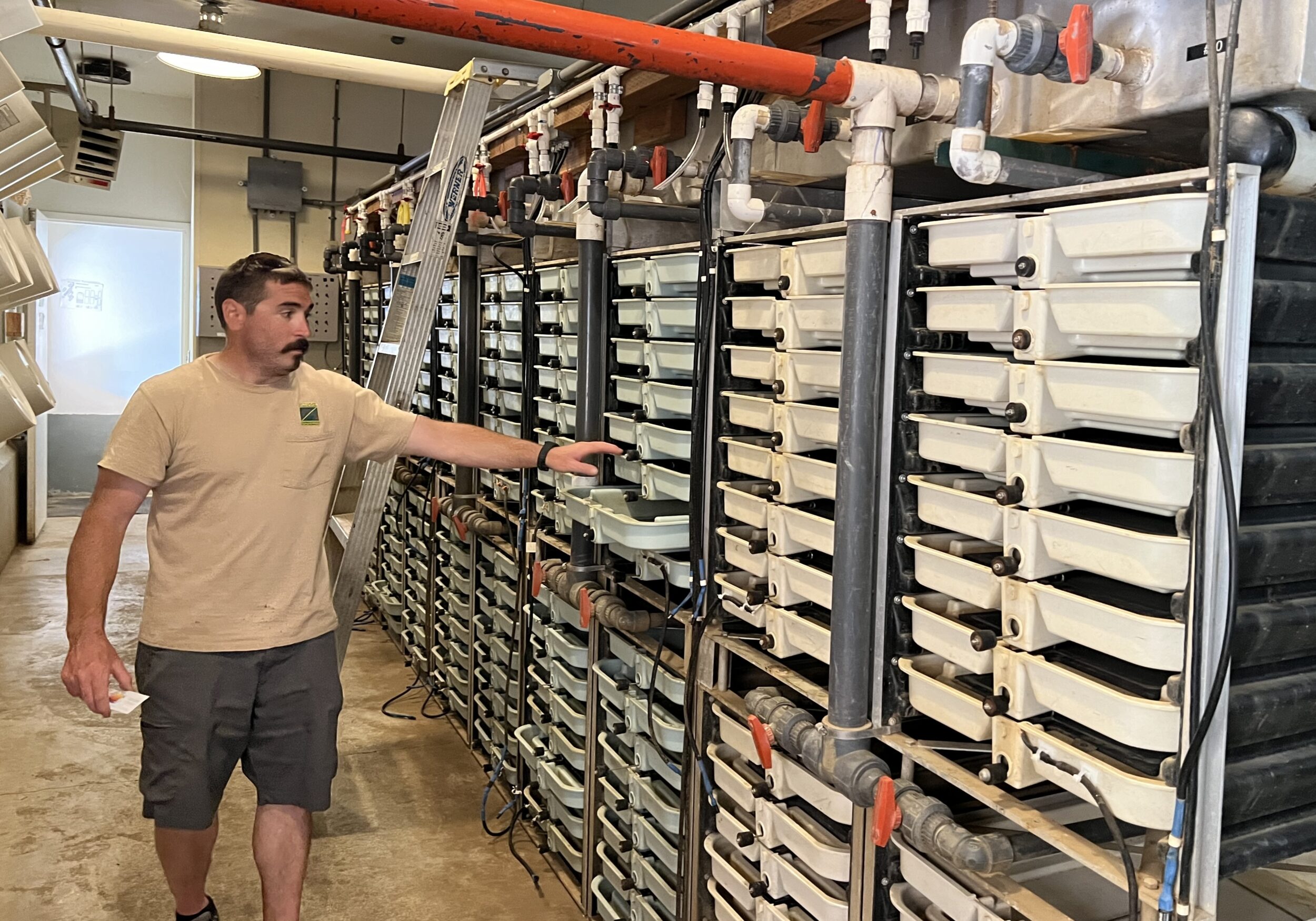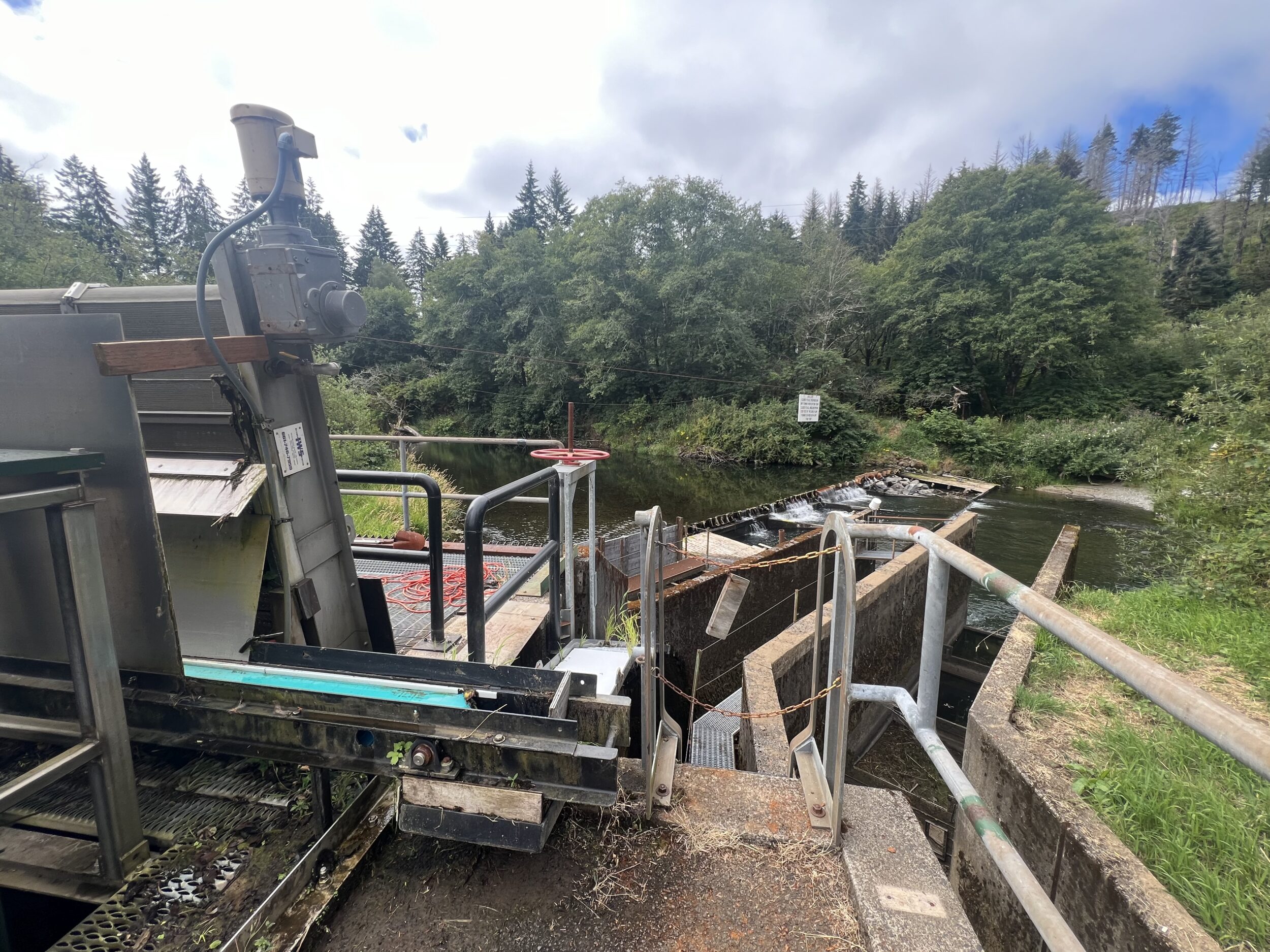
By QUINTON SMITH/Lincoln Chronicle
A year ago, the Oregon Department of Fish & Wildlife warned it was considering closing its 50-year-old Salmon River Hatchery near Otis in north Lincoln County.
After the Oregon Legislature approved the agency’s 2025-27 budget without money for the hatchery, the time has come to begin winding down operations, ODFW officials announced this week.
The financially-strapped agency targeted the hatchery in Otis for closure because it is one of the most expensive of the 30 that ODFW owns or operates and one of the most affected by a persistent increase in water temperatures.
“Closing a hatchery is a very difficult decision, and it’s also very rare,” ODFW deputy director Shaun Clements said in a media release. “In the past three decades or more, ODFW has closed only one hatchery, and that was because of ongoing disease issues.”
The Salmon River Hatchery sits on 23 acres seven miles northeast of Lincoln City. It contains living quarters for the three employees, offices, six holding and rearing ponds and raceways where fish live before their release, and a separate building where eggs are grown into tiny fish.
The hatchery has been raising 200,000 fall Chinook to release in the Salmon River, 300,000 coho for the lower Columbia, 50,000 summer steelhead for the Siletz River, and 40,000 rainbow trout for lakes on the coast and in the north Willamette Valley.
But because fall Chinook will continue to return to the Salmon River for up to five years and the agency has agreements with Canada and the Siletz tribe, it simply can’t lock the hatchery’s gate and walk away. Clements said some work will continue at the hatchery for the next five years to collect brood fish and acclimate and release fall Chinook smolts in the Salmon River.

The hatchery’s fall Chinook program is used as an indicator fish under a treaty with Canada to help manage fishing in international waters and to make sure the salmon are not over-harvested so sufficient numbers return to Oregon.
But it will take time to transition away from using Salmon River Chinook for that program, Clements said, so the agency will try to identify a new location or Chinook stock.
ODFW is also working to keep parts of hatchery property open to the public while it continues limited operations for five years, the media release said, “depending on a final decision about the facility’s future.”
The site is a popular fishing spot, and ODFW said it wants to keep access available. It also plans to station a volunteer host at the hatchery, along with limited staff.
Clements said ODFW is planning to move most fish production to other hatcheries, including:
- Salmon River fall Chinook and Siletz River summer steelhead rearing will be moved to the Cedar Creek Hatchery in Hebo. No changes will be made to the release sites for those juvenile fish.
- To allow Salmon River Hatchery fall Chinook and steelhead to be reared in Hebo, the agency said Cedar Creek’s spring Chinook production will be reduced by 20 percent to 185,000 smolts and summer steelhead will be reduced by 50 percent to 50,000 smolts.
- The Salmon River Hatchery’s lower Columbia coho will be moved to a Columbia River hatchery, possibly one in Clackamas.
But the agency was unable to find space at other hatcheries to make up for the rainbow trout raised at the Salmon River facility. That means 11 percent fewer trout – 20,000 pounds of fish out of 183,000 pounds — previously raised across its northwest Oregon hatcheries.

High operating costs
The ODFW said budget issues are just one of the problems facing its hatchery system. Impacts from wildfire, decreasing stream-flows, rising stream temperatures, and a large maintenance backlog are its other challenges.
Opened in 1975, the Salmon River Hatchery now has a number of problems – high electricity costs to pump water up from the river to rearing areas, high water temperatures in the summer that cause diseases, and aging equipment.
A legislatively mandated Oregon hatchery vulnerability and resiliency study, completed last year, is helping form the strategy for a more resilient hatchery system, the ODFW said. It was that study that identified Salmon River Hatchery as one of the state’s more vulnerable hatcheries.
In a statement last year to the Lincoln Chronicle, ODFW fish division manager Mike Harrington said the hatchery was one of two chosen for closure because it was “the most vulnerable to climate change — decreased flows, increased temperatures, fires, flooding — and will be among the costliest to maintain going forward because of the deferred maintenance costs …”
- Quinton Smith is the editor of Lincoln Chronicle and can be reached at YachatsNews@gmail.com



















I noticed high cost of electricity being one reason for this closure. If the Lower Snake River dams are breached it will mean the closure of much more than this one hatchery.
At a time when or salmon runs have dramatically declined.
F&G don’t have funds to keep the hatchery operation going?
This is vary bad news for Oregon future fish runs.
It doesn’t really help the situation for the State of Oregon or the people that enjoy fishing. Not to mention businesses that benefit from fish hatcheries in the surrounding areas. It seems to me that a lot of money is funneled into the hatcheries that raise trout to be distributed in the small ponds and lakes. Those hatcheries are not closing as far as I know. It’s hard for me to fathom that the State of Oregon can increase fising/hunting license and tag prices and not better the fisheries. Once again the government doing the right thing for the government.
There is more than enough money. The state needs an audit and to be held accountable for the waste of tax dollars. Its is impossible to imagine with the rise in popularity of hunting and fishing combined with the rise in rates of licenses and tags that there is less money now than in the past.